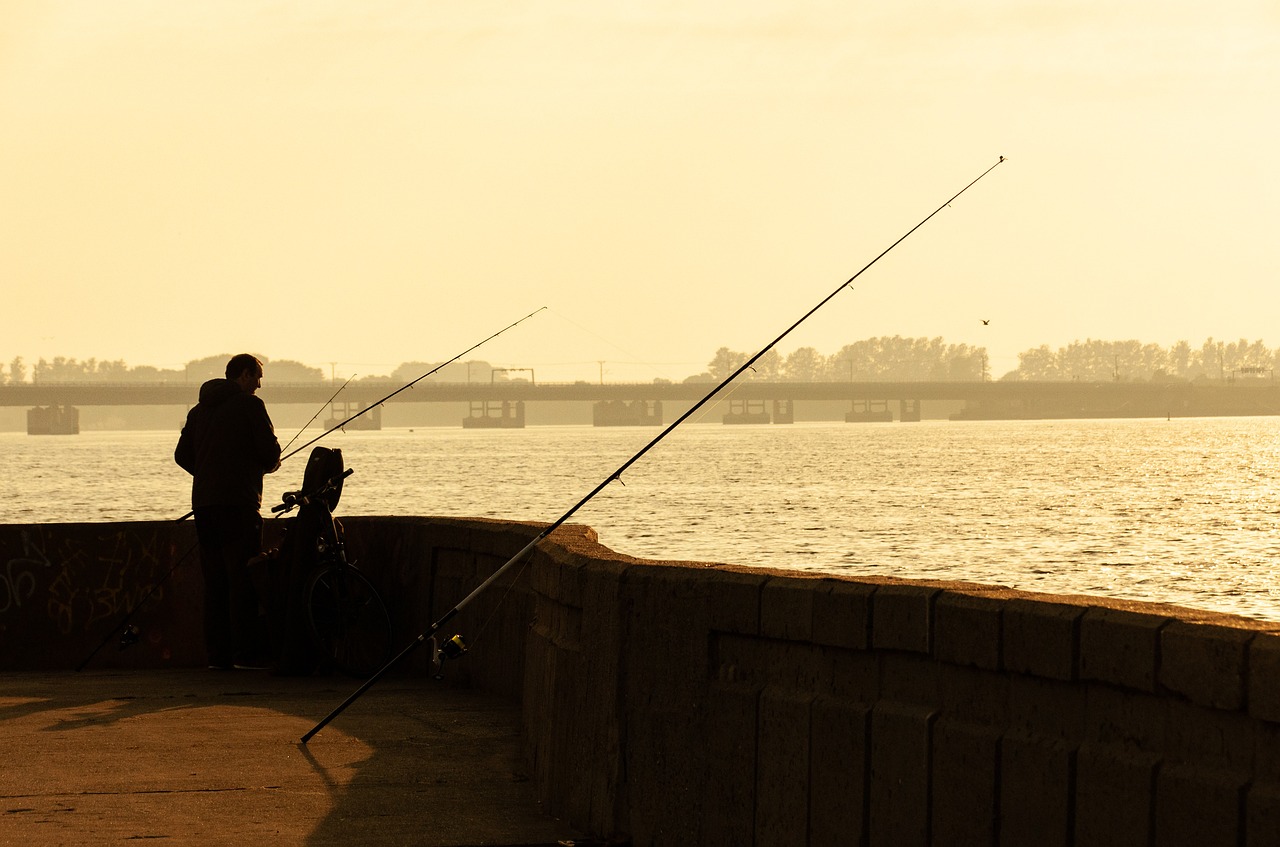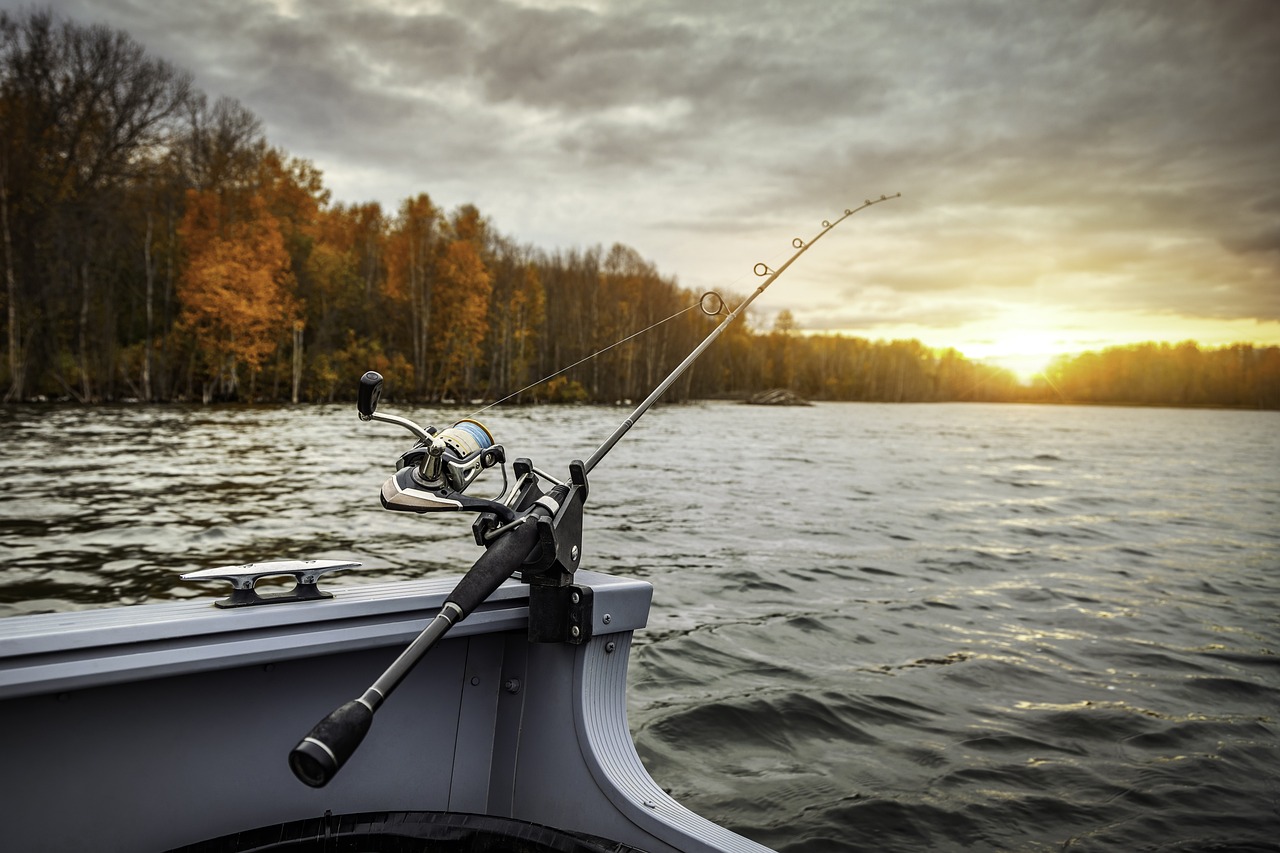Fishing is a popular pastime enjoyed by millions of people around the world. At the heart of every fishing set-up is the fishing rod - an essential piece of kit allowing anglers to cast their bait or lure and land fish. Fishing rods have been used for millennia and primitive models were crafted from wood, bone and even horse hair. Early British rods were cumbersome 16ft implements used on rivers and streams. Thankfully rod technology and materials have developed considerably since these early days!
All fishing rods consist of the same basic components:
Rod blank: Forms the main structure and length. Usually graphite or fibreglass today.
Rod handle: Lower end used for gripping by angler. Often made of cork or foam.
Reel seat: Holds the reel in place on the rod. Usually graphite or aluminium.
Rod guides: Rings placed along the rod to guide the fishing line.
Fishing Rods — Choosing the Right Specifications
When selecting any piece of fishing kit, matching its specifications to your precise requirements is critical. Key variables to consider when choosing the right fishing rod include:
Rod length and optimal sizes
Rod action and what it means
Rod power and striking the right balance
Rod material and key options
Length is the most basic specification, dictating the bending curve and casting distance. As a rule of thumb:
Short rods of 4-5ft suit light close-range fishing.
Medium rods of 6-7ft work well all around in lakes and rivers.
Long rods 8-12ft+ allow maximum distance sea casting.
Action refers to where the rod starts to bend under load. Different actions suit varying fishing styles:
Fast action bends nearer the tip, making rods responsive to twitching lures.
Slow action means the whole rod curves, with more shock absorption.
Power relates to the strength of the rod blank and its lifting capability once bent. Light lines need less power, while heavier setups require more:
Ultra-light rods handle 3-6lb line and small fish.
Heavy rods can lift 30lb+ lines and large carp/pike.
Materials used today focus on graphite and fibreglass blends.
Graphite is light, sensitive and strong
While glass provides more resilience
Fishing Rods — Setting Up and Accessorising
So you've selected the perfect fishing rod for your needs. And now, let’s how how you can prepapre your new rod for its first fishing trip by adding key accessories.
Fitting guides, a reel seat and a handle
Attaching rod carriers and tip protectors
Adding rod rests and fishing holdalls
While rods will come with pre-installed features, customising and upgrading accessories can make your setup more practical, comfortable and durable during transit.
Most fixed spool or bait casting reels require at least a reel seat fitting mid-way along the fishing rod blank:
Reel seats hold reels firmly in position. Graphite or aluminium are common today.
Seats accept front drag or rear drag reels as required.
Installing durable guides including the rod tip ring is also standard practice:
Guides/ring loops allow the fishing line to move freely when casting.
Quality hardened steel guards prevent splits and damage.
Handles improve comfort and grip for anglers during long fishing sessions:
Cork and EVA foam are preferred materials.
Length should match angler height for optimal ergonomics.
Other optional extras like rod rests, carry cases and tip protectors safeguard your rod in transit:
Padded fishing rod bags or hard cases prevent breakages.
Rod rests allow secure storage during bank/boat fishing.
Rubber cappings shield the delicate rod tip section.
Fishing Rods — Transportation and Storage
You maintain your fishing rods diligently ready for your next big catch. But how do you transport rods safely to the lake, river or beach without breakages?
Firstly look at the variety of rod bags available for transit:
Hard v-shaped cases offer maximum protection for 1-2 rods. Expensive but near bombproof!
Cheaper soft caddies zip closed and often carry 3-4 rods. Avoid overpacking these.
Specialist float tubes allow bulk transport of multiple rods assembled.
Carefully loading your rod bag into cars is also important:
Use vehicle rod carriers cradling bags horizontally on the floor or roof if available.
Alternatively, slide onto rear seats strapped in place or wrap in blankets when using boots.
Low-cost solutions for home storage include:
Corner-mounted rod racks help organise multiple rods tidily.
Wall hooks, hangers and X-frame rod holders for limited spaces.
Purpose-built rod cabinets look smart but use floorspace.
So in summary transporting or storing rods with some basic protective measures prevents breakages costing £££s!
Fishing Rods — Specialist Rods and Features
In addition to common all-around freshwater and sea rods, various niche rods have specific design attributes for dedicated roles. This quick overview covers a selection including:
Long-distance surf rods optimised for extreme range
Hardy fly rods are built light for casting lightweight flies
Strong carp rods intended for battling monster specimens
Compact travel rods that pack down small for holiday luggage
To achieve extreme 120m casts off beaches, heavy surf rods use extended lengths and shaped blanks:
13-14 feet is common for bombing baits offshore.
Special venting within carbon walls prevents rod buckling under load.
Whereas fly rods prized for delicate dry fly presentation have different priorities:
Emphasis is on lightweight flexible graphite blanks just 2-3m long.
Multiple light 'tapers' place more strength nearer the grip.
Carp rods for seeking 40lb+ beasts contrast by majoring on sheer power via solid graphite blanks:
Strong solid walls prevent fracture when pumping monster carp from snags underwater.
Heavy-duty roller rings handle abrasive braided lines used to muscle big carp.
For globetrotters visiting far-flung regions, multi-section travel rods bridge portability and function:
Blanks are separated into as little as three parts for carrying compactly.
Specially amended fittings allow reliable reconstruction frequently onsite.
Related articles

Let us know you agree to cookies
We use marketing, analytical and functional cookies as well as similar technologies to give you the best experience. Third parties, including social media platforms, often place tracking cookies on our site to show you personalised adverts outside of our website.
We store your cookie preferences for two years and you can edit your preferences via ‘manage cookies’ or through the cookie policy at the bottom of every page. For more information, please see our cookie policy.









